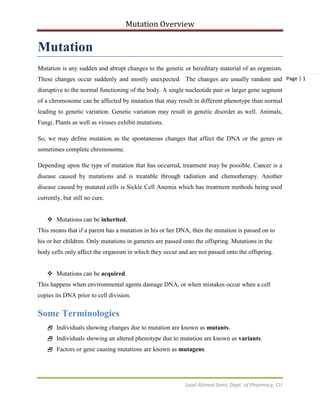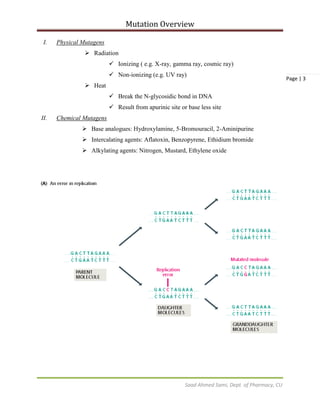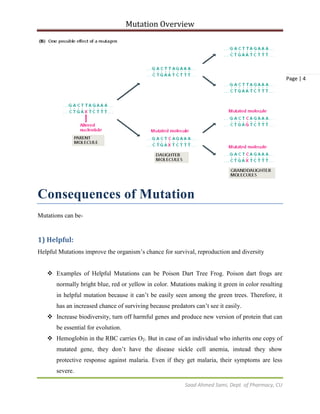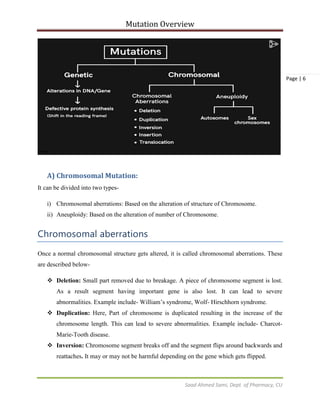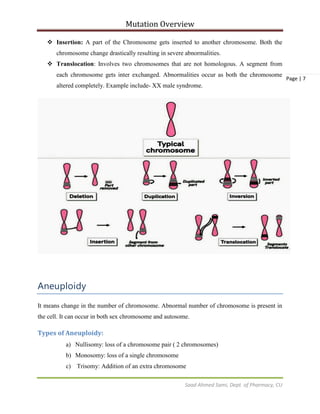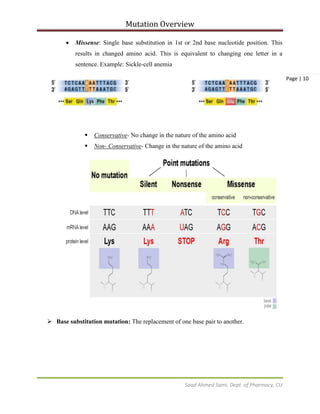This document provides a comprehensive overview of mutations, defining them as sudden changes to genetic material that can affect any organism and can be inherited or acquired. It discusses various types of mutations, such as point mutations, chromosomal mutations, and their consequences, including beneficial, harmful, and neutral effects. The document also explores the mechanisms of mutations, including spontaneous and induced mutations, and their classifications based on different criteria.
